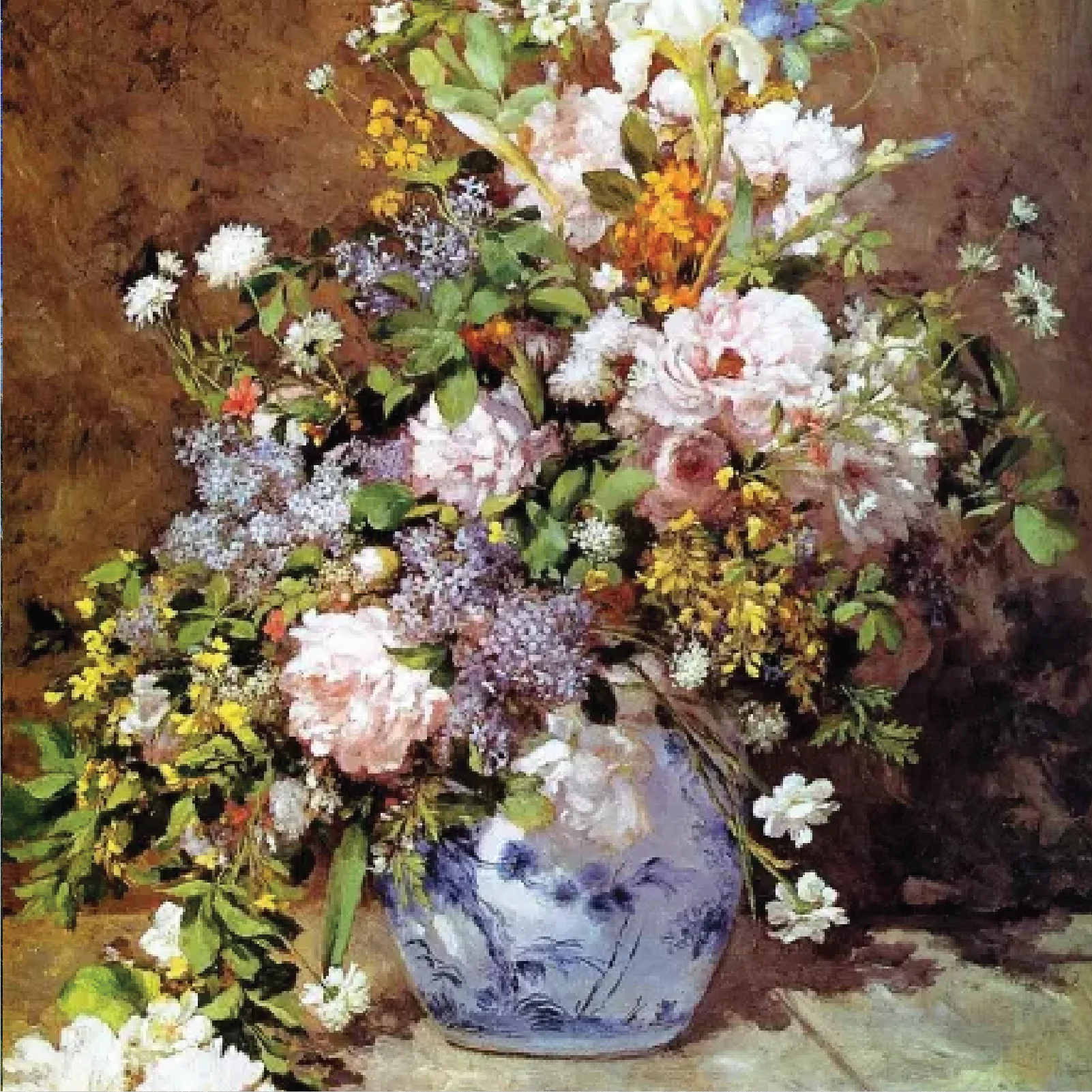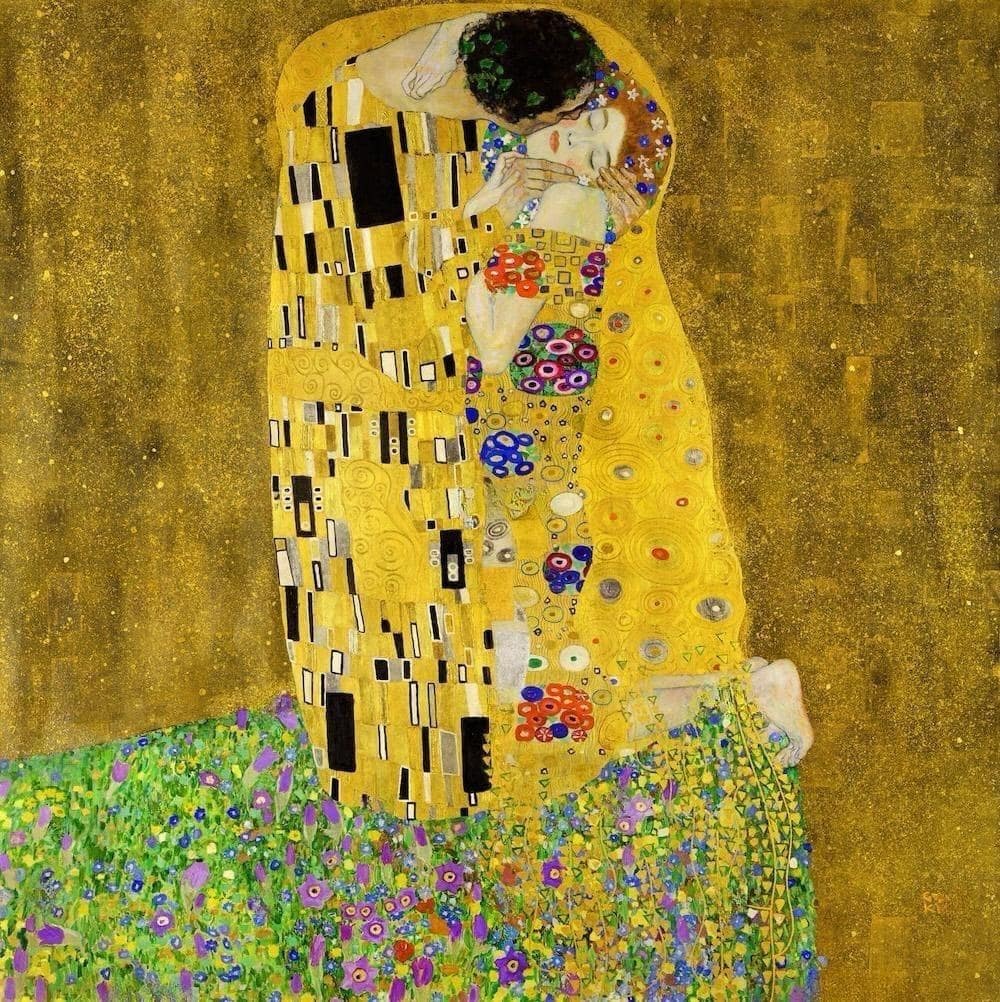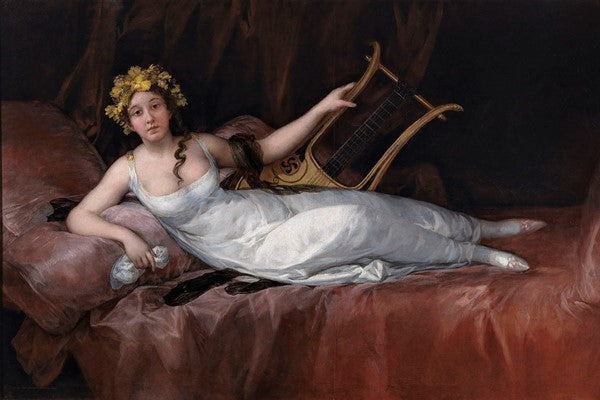Introduction
Art has the power to transform interior design. It can add personality, evoke feelings, and bring a room together, making it feel whole. While choosing beautiful artwork is important, knowing how to position it effectively is equally crucial.
In this article, we will explore expert tips for placing art in different areas of a room. We'll discuss everything from finding the right height to creating impactful gallery walls. Whether you're an experienced decorator or new to interior design, these insights will help you maximize your art pieces.
1. Understanding the Basics of Art Placement
The Importance of Getting the Height Right
Art placement is not just about choosing beautiful pieces; it's also about positioning them correctly to enhance the room's overall aesthetics. One important rule is hanging art at eye level. This means that the center of the artwork should be around 57-60 inches off the ground. Hanging art at this height makes it comfortable for most people to view and creates a natural and cohesive look in any space.
Guidelines for Art Placement Above Furniture
Art placement above furniture requires special attention to maintain visual balance and harmony:
- Above Sofas or Seating: Make sure there is enough space between the top of the furniture and the bottom of the artwork. Usually, leave about 6-12 inches of clearance.
- Over a Mantel: For a fireplace mantel, aim to hang art 4-6 inches above it. This helps draw attention upwards without overpowering the mantel decor.
- Above Beds or Dressers: When placing art over beds or dressers, it is recommended to have a clearance of 8-10 inches to avoid a crowded look.
Height Considerations
Eye-Level Range for Cohesive Look
The recommended range for hanging art at eye level (57-60 inches) is not just a random number. It creates a cohesive look by ensuring that artworks are easily viewed without strain. Whether you are standing or sitting, this height aligns with natural sightlines, making the room feel more inviting and balanced.
Aligning Art with Furniture
Aligning art with furniture involves several techniques:
- Centering: Centering art over key pieces like sofas or consoles provides a symmetrical and orderly appearance.
- Asymmetrical Arrangements: For a more dynamic look, try an asymmetrical arrangement by grouping multiple pieces together. This can be especially effective in contemporary or eclectic spaces.
Exploring different layouts and arrangements can significantly impact how your room feels. If you're looking for more inspiration on interior design art ideas, check out this guide on 10 Interior Design Art Ideas to Elevate Your Space.
Mastering these basics ensures that every piece from your collection shines while contributing to an overall sense of order and beauty in your home.
2. Achieving Scale and Proportion in Art Placement
Understanding the Impact of Size on Balance
The size of your artwork plays a pivotal role in the overall balance of a room. Oversized art can be a bold statement piece that draws attention and anchors the space. Imagine a large, vibrant oil painting reproduction from Art&See above your living room sofa — it not only fills the wall but also sets a tone for the entire room.
Examples:
- A grand piece over a fireplace can create a focal point that enhances the architectural features.
- In a dining room, an oversized artwork can make the space feel more intimate by visually lowering the ceiling.
Strategies for Visual Impact
To achieve visual impact through art placement, consider variations in size:
- Oversized Pieces: Use these sparingly to avoid overwhelming the space. One or two large artworks can make a powerful statement without cluttering the room.
- Curated Groupings: Combine smaller pieces to create an engaging gallery wall. This approach can add depth and texture to your decor.
- Balanced Arrangements: Mix different sizes within one display for an eclectic yet cohesive look. For instance, pairing medium-sized artworks with smaller ones can create an interesting visual hierarchy.
Tips:
- Scale and Proportion: Ensure that the size of your artwork is proportional to the furniture and other elements around it.
- Spacing: Maintain even spacing between pieces when creating groupings to avoid a cluttered appearance.
Experiment with these strategies to find what works best for your space, keeping in mind how each piece interacts with its surroundings. The goal is to achieve harmony between scale and proportion, enhancing both the artwork and the room's design.
3. Designing Impactful Gallery Walls
Creating a gallery wall turns a boring space into a beautiful sight, adding depth and personality to modern interiors. You can use different styles and layouts to make your gallery wall stand out as the main attraction.
Gallery Wall Styles
- Symmetrical Layout: This timeless style involves arranging artwork in a grid or straight line pattern. It’s perfect for those who like things neat and balanced.
- Asymmetrical Layout: Mixing different sizes and shapes of frames creates an interesting look. This arrangement adds an element of surprise and visual appeal.
- Salon Style: Inspired by European art salons, this style features closely hung artworks of various sizes and subjects, filling the entire wall from floor to ceiling.
Tips for Dynamic Gallery Walls
To avoid a cluttered or boring look, consider these tips:
- Mix Frame Styles: Combining different frame styles—wooden, metallic, minimalist—adds texture and interest.
- Vary Art Mediums: Incorporate paintings, photographs, prints, and even mirrors for a diverse display.
- Use Unconventional Arrangements: Try diagonal lines or circular patterns instead of traditional rows.
- Incorporate Wall Décor: Add elements like shelves, plants, or sculptures to break up the space.
Example Arrangement
Imagine a living room with a large blank wall. Using an asymmetrical layout:
- Place the largest piece slightly off-center.
- Surround it with smaller pieces varying in size and shape.
- Mix in frames with different finishes for contrast.
This approach ensures each piece stands out while contributing to an overall cohesive design.
Gallery walls are all about creativity and personal expression. By exploring various styles and keeping your arrangements dynamic, you can create a captivating focal point that reflects your unique taste.
4. Enhancing Cohesion: Art and Furniture
Integrating art with furniture can transform a room, creating a unified and aesthetically pleasing environment. When considering furniture arrangement, it's essential to maintain appropriate clearance space between your artwork and furnishings. This ensures that each element complements the other without appearing cramped or overwhelming.
Key Considerations:
- Clearance Space: Keep at least 6-12 inches of space between the bottom of the artwork and the top of furniture pieces like sofas or sideboards. This gap helps maintain visual balance and prevents the area from looking too cluttered.
- Alignment: Aligning art centrally above furniture often works well, but don’t shy away from experimenting with asymmetrical arrangements for a more dynamic look.
Examples of Art-Furniture Relationships:
Living Room
- Above the Sofa: Choose a piece that is roughly two-thirds the width of the sofa to ensure proper proportion. For instance, if you have a 6-foot sofa, an artwork that is about 4 feet wide will complement it nicely.
- Beside Shelves: Create an engaging vignette by placing smaller artworks next to bookshelves or on adjacent walls. This can make the room feel more curated and personalized.
Dining Area
- Above a Buffet Table: A large statement piece can anchor this space beautifully. Ensure there’s enough clearance (about 8-10 inches) so that both the art and the table can stand out individually.
- Gallery Wall Next to Dining Table: A gallery wall can add character and become a conversation starter during meals. Mix different sizes and styles, but keep some uniformity through frames or color palettes.
Integrating art with your furniture not only enhances visual appeal but also contributes to a cohesive design narrative. By paying attention to clearance space and thoughtful alignment, you can create harmonious relationships between these elements in any room.
5. The Flow of Art: From Wall to Wall
Creating a sense of movement and unity in a room through art is essential. When art is placed intentionally, it can guide the viewer's eye smoothly from one piece to another, enhancing the overall visual experience.
Standout pieces are key in this process. These are artworks that naturally attract attention and can act as focal points in your arrangement. Strategically placing these standout pieces helps create a natural flow and ensures that the eye moves easily around the room.
Techniques for Creating Continuity
Here are some techniques you can use to achieve continuity in your art arrangement:
- Strategic Placement Across Adjacent Walls: Position artworks so they complement each other across different walls. For example, if you have a large, bold painting on one wall, balance it with smaller, subtler pieces on the opposite wall.
- Consistent Themes or Color Schemes: Use artworks that share similar themes or color palettes to create harmony. This approach ties different areas together, making the space feel unified.
- Varied Heights and Spacing: Experiment with different heights and spacing between pieces to avoid monotony. This technique also allows each artwork to stand out on its own while contributing to the overall flow.
By carefully considering these elements, you can ensure that your art placement not only enhances the room's design but also creates an inviting visual journey for anyone who enters.
Considering Functionality and Theme in Art Selection
Art can play a vital role in multifunctional spaces like home offices or guest rooms, serving both aesthetic and practical purposes. In a home office, art can inspire creativity and productivity. A piece depicting a serene landscape might provide a calming backdrop during stressful workdays. In guest rooms, art can create a welcoming atmosphere, making your visitors feel at home.
Multifunctional Spaces
Home Offices
Choose artwork that stimulates and motivates. Abstract pieces with vibrant colors can inject energy into the space, while minimalist designs might help maintain focus.
Guest Rooms
Opt for soothing and inviting themes. Botanical prints or tranquil seascapes can make the room feel cozy and hospitable.
Thematic Art Choices
Selecting art that aligns with the room's theme enhances the overall design coherence. If your living room has a coastal theme, incorporating beach scenes or marine life paintings will tie the decor elements together seamlessly. Similarly, in a modern minimalist space, black-and-white photography or geometric abstracts can reinforce the clean lines and simplicity of the room.
Tips for Thematic Art Choices:
- Match Color Schemes: Ensure that the colors in your artwork complement the existing palette of the room.
- Reflect Personal Style: While maintaining thematic consistency, don't shy away from showcasing pieces that reflect your personal taste.
- Consider Size and Scale: Large-scale artworks can become focal points, while smaller pieces can be grouped to create interesting visual arrangements.
Personal Touch
Your choice of art should tell a story about you. Incorporate pieces that evoke personal memories or speak to your interests. This not only adds character to your space but also makes it uniquely yours.
In essence, thoughtful art selection based on functionality and theme not only beautifies your space but also enhances its utility and personal connection.
Embracing the Power of Negative Space
Negative space, often referred to as wall blankness, plays a crucial role in art composition. It enhances the impact of surrounding artworks by providing breathing room and allowing each piece to stand out. Imagine walking into a gallery where every inch of the wall is covered with art; it can feel overwhelming. Negative space helps avoid this cluttered look.
Enhancing Art with Negative Space
- Highlighting Individual Pieces: Leaving enough space around an artwork ensures that it gets the attention it deserves. The eye naturally gravitates towards a single piece when it's not competing for attention.
- Creating Visual Breaks: Negative space acts as a rest stop for the eyes, making the viewing experience more enjoyable. It allows viewers to appreciate each piece individually without feeling bombarded.
- Balancing Composition: In any room, negative space can balance out more densely decorated areas, contributing to a harmonious overall look.
Knowing When to Leave Walls Blank
Leaving walls intentionally blank might feel counterintuitive, especially if you have a collection you're eager to display. However, blank walls can be just as impactful:
- Small Spaces: In smaller rooms, less is often more. A single statement piece with ample negative space around it can make the room feel larger and more open.
- Focal Points: If one wall features a stunning focal piece, consider leaving adjacent walls blank or sparsely decorated to maintain focus.
- Minimalist Aesthetics: For those who prefer minimalist design, embracing wall blankness can create a clean and serene environment.
Experimenting with negative space doesn't mean sacrificing your art collection. Instead, think of it as setting the stage for each piece to shine brighter.
The Art of Experimentation: Trying Out Different Arrangements
Embrace Unconventional Art Placements
Art placement isn't a one-size-fits-all endeavor. Exploring and being open to unconventional art placements can lead to finding the perfect arrangement for your space. Sometimes, stepping outside the traditional boundaries can add a unique flair to your room.
- Consider unexpected spots: Try placing a piece of artwork on a shelf, leaning against the wall, or even in a hallway.
- Mix and match: Combine different styles and sizes of artwork to create an eclectic look that reflects your personality.
- Experiment with orientation: Rotate pieces between portrait and landscape orientations to see which fits better.
Practical Methods for Testing Layouts
Testing out different layouts is essential before making any permanent decisions. Here are some practical methods to help you visualize potential arrangements:
- Removable adhesive hooks: These allow you to hang art temporarily without damaging walls. It's perfect for trying out various heights and positions.
- Paper templates: Cut out paper in the size and shape of your artwork. Tape these templates on the wall to play around with different configurations before committing.
Seeking Feedback and Making Adjustments
Getting feedback can be incredibly valuable when finalizing your art placements. Don't hesitate to seek opinions from friends or family who might offer a fresh perspective.
Consider Spatial Dynamics and Comfort Levels
When adjusting placements, think about the overall spatial dynamics of your room:
- Balance: Ensure that the arrangement doesn't overwhelm or underwhelm any part of the room.
- Comfort levels: Your comfort is key. The placement should feel natural and not forced, contributing positively to your living environment.
Step Back and Evaluate
Once you've made some adjustments, take a step back:
This quote underscores the importance of perspective. Stepping back allows you to evaluate how the space feels with the artwork in place. Does it create a cohesive look? Does it enhance the room's ambiance? These questions are vital in achieving a harmonious design.
This approach ensures that each piece contributes meaningfully to your space, creating an environment that is both aesthetically pleasing and personally satisfying.
Bringing It All Together
Effective art placement tips can truly transform the ambiance and style of any room. The right height, scale, and proportion play crucial roles in creating a cohesive look. For instance, hanging art at eye level ensures it captures attention effortlessly, while aligning pieces with furniture maintains visual harmony.
- Height Considerations: Remember to hang your artworks at eye level for a cohesive look.
- Scale and Proportion: Use oversized pieces or curated groupings of smaller artworks to achieve visual impact.
Incorporating gallery walls as focal points can add a dynamic element to modern interiors. Unique arrangements help avoid clutter and monotony, allowing your personality to shine through.
- Gallery Walls: Create focal points and use unique arrangements to keep the display dynamic.
Combining art with furniture forms a cohesive design narrative, enhancing the overall flow from wall to wall. This creates a sense of continuity that guides the eye smoothly across the room.
Art&See's collection of oil painting reproductions is curated specifically for their ability to make a statement in any space. From classic masterpieces to modern interpretations, their selection offers endless possibilities for enhancing interior design.
Exploring Art&See’s offerings can provide inspiration and confidence in your choices, ensuring each piece not only complements your decor but also enhances the room's overall vibe.
Final Thoughts
Guidelines can be incredibly helpful when placing art, but personal preference should always lead the way. Trust your instincts and create displays that bring joy and inspiration to your space. Whether it's a bold statement piece or a subtle, complementary artwork, your choices should reflect your unique taste and personality.
Art&See offers an extensive range of oil painting reproductions that can transform any room. From masterpieces by renowned artists to curated collections, there's something for every style and preference. Beyond their impressive catalog, Art&See provides expert advice on art selection and placement through their blog, making it a valuable resource for both art enthusiasts and interior designers alike.
- Personal Preference: Let your taste guide you.
- Art&See Resources: Explore their blog for expert tips.
Creating an inspiring environment is about making choices that resonate with you. Your home should be a reflection of what you love, and the art you select plays a significant role in achieving that ambiance.
FAQs (Frequently Asked Questions)
What is the role of art in enhancing interior design?
Art plays a crucial role in enhancing interior design by adding visual interest, personality, and emotional depth to a space. It can transform the ambiance of a room and serve as a focal point that ties together various design elements.
How should I determine the ideal height for hanging artwork?
The standard rule for hanging art is to position it at eye level, which typically ranges from 57 to 60 inches from the floor. This creates a cohesive look and ensures that the artwork is easily appreciated without straining the neck.
What are some effective strategies for creating gallery walls?
To create impactful gallery walls, consider using a mix of frame styles and sizes to add visual interest. Arrange artworks in a way that tells a story or follows a theme, while avoiding clutter by leaving some space between pieces to allow each artwork to stand out.
How can I integrate art with furniture for better cohesion?
Integrating art with furniture involves maintaining appropriate clearance space around both elements. For example, place artwork above sofas or sideboards while ensuring it complements the furniture's style and color palette, creating a harmonious design narrative.
Why is negative space important in art placement?
Embracing negative space is vital as it enhances the impact of surrounding artworks. Leaving walls intentionally blank allows each piece to breathe and prevents overcrowding, contributing to a more balanced and curated display.
What should I consider when selecting art for multifunctional spaces?
When selecting art for multifunctional spaces, consider pieces that align with the overall theme or purpose of the area. Choose artworks that not only enhance aesthetics but also reflect personal taste, ensuring they contribute positively to the room's functionality.





























